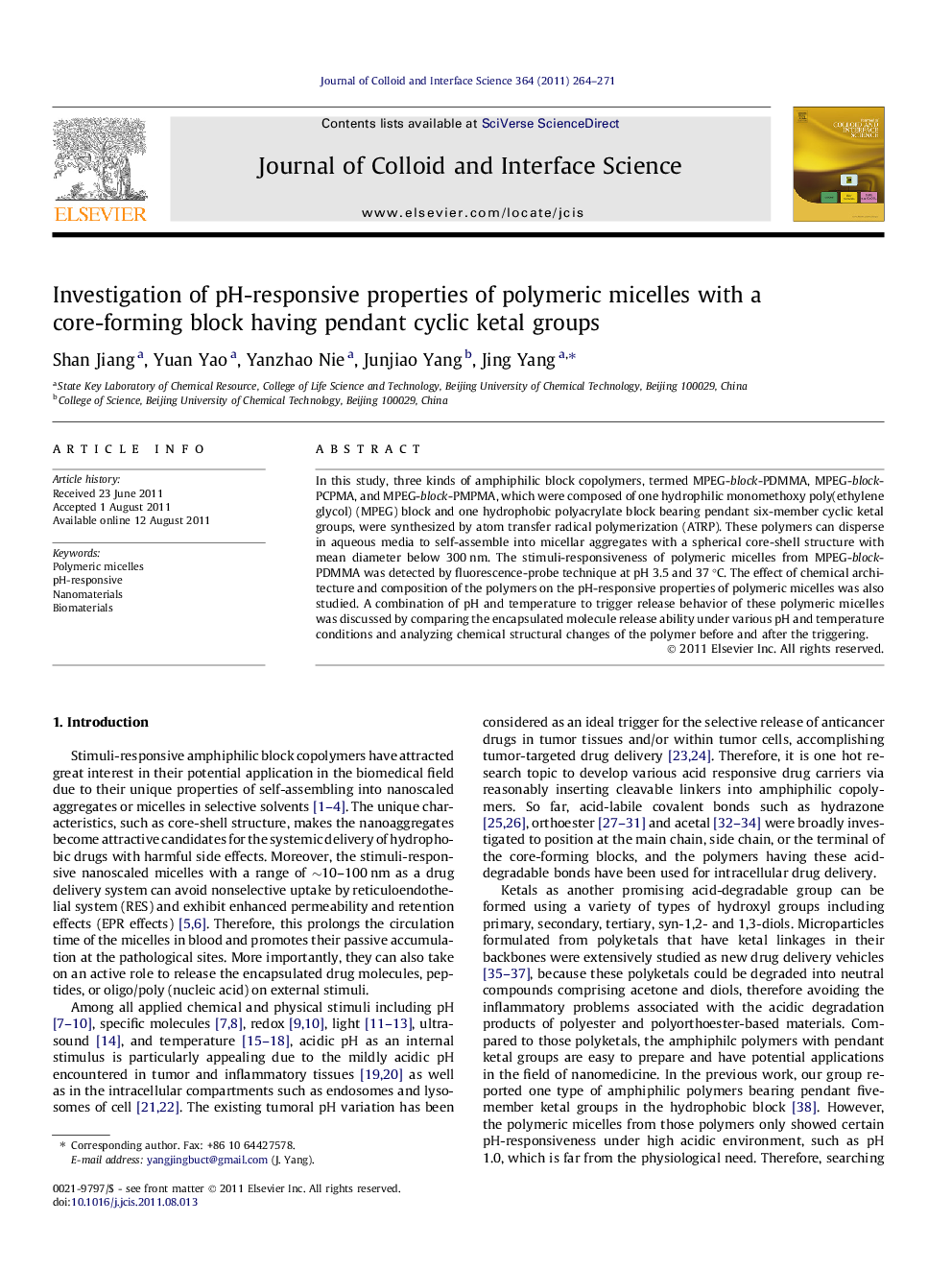| Article ID | Journal | Published Year | Pages | File Type |
|---|---|---|---|---|
| 608439 | Journal of Colloid and Interface Science | 2011 | 8 Pages |
In this study, three kinds of amphiphilic block copolymers, termed MPEG-block-PDMMA, MPEG-block-PCPMA, and MPEG-block-PMPMA, which were composed of one hydrophilic monomethoxy poly(ethylene glycol) (MPEG) block and one hydrophobic polyacrylate block bearing pendant six-member cyclic ketal groups, were synthesized by atom transfer radical polymerization (ATRP). These polymers can disperse in aqueous media to self-assemble into micellar aggregates with a spherical core-shell structure with mean diameter below 300 nm. The stimuli-responsiveness of polymeric micelles from MPEG-block-PDMMA was detected by fluorescence-probe technique at pH 3.5 and 37 °C. The effect of chemical architecture and composition of the polymers on the pH-responsive properties of polymeric micelles was also studied. A combination of pH and temperature to trigger release behavior of these polymeric micelles was discussed by comparing the encapsulated molecule release ability under various pH and temperature conditions and analyzing chemical structural changes of the polymer before and after the triggering.
Graphical abstractThe release behavior of polymeric micelles from MPEG-block-PDMMA triggered at pH 3.5 and 37 °C depended on the chemical architecture with miceller size expansion.Figure optionsDownload full-size imageDownload high-quality image (34 K)Download as PowerPoint slideHighlights► The pH-responsiveness was tunable depending on chemical structure of the polymers. ► The transformation from an amphiphilic polymer to a doubly hydrophilic polymer was detected. ► Changes in both pH and temperature generated the encapsulated molecule release from the polymeric micelles.
